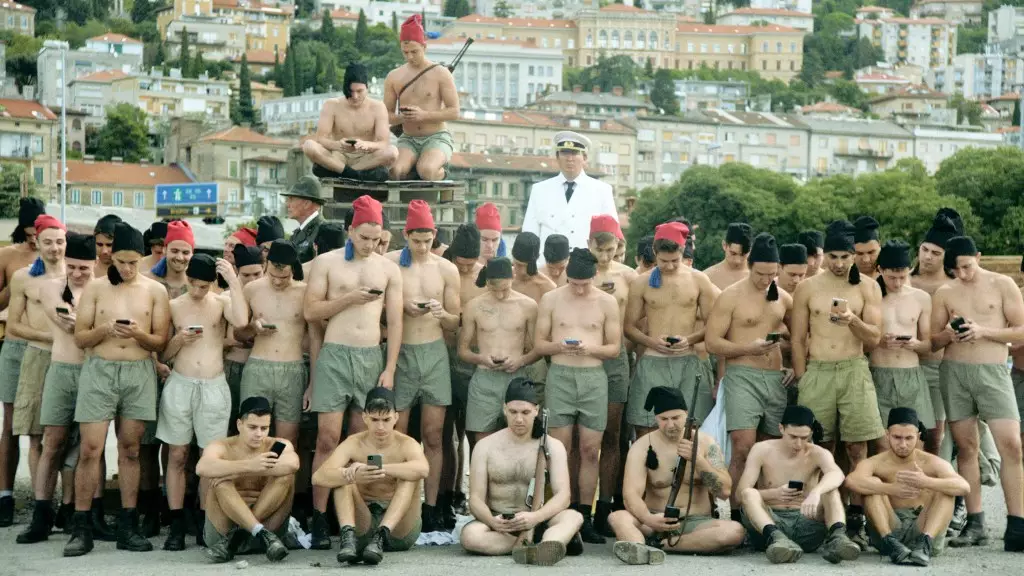The documentary “Fiume o Morte!”, directed by Croatian filmmaker Igor Bezinović, has garnered significant acclaim, recently clinching the prestigious Tiger Award at the International Film Festival Rotterdam (IFFR). This recognition is not merely a pat on the back for Bezinović; it stands testament to the film’s penetrating examination of Gabriele D’Annunzio—a polarizing figure in Italy’s artistic and political history. By intertwining dramatic reenactments with documentary elements, “Fiume o Morte!” offers a compelling narrative of D’Annunzio’s infamous campaign to annex the city of Fiume (modern-day Rijeka, Croatia) after World War I, a move born out of his dissatisfaction with the resolutions from the Paris Peace Conference.
What sets this documentary apart is its timely resonance amidst the prevailing tide of nationalism across Europe. The film underscores how historical grievances can be weaponized in the context of contemporary political landscapes. The thematic potency of the narrative lies in its portrayal of a historical episode without reducing it to mere nostalgia. Instead, it invites viewers to reflect on the cyclical nature of nationalism and the ways in which past events continue to stir present-day sentiments.
The Tiger Competition Jury’s decision to award “Fiume o Morte!” surrounded the film’s ability to encapsulate complex themes of nationalism and identity. Comprising notable figures such as Yuki Aditya and Peter Strickland, the jury emphasized the film’s role in using public spaces and its characters as “co-conspirators” in a historical dialogue. This framing adds layers to the viewer’s understanding of how public memory is both shaped and contorted by the prevailing ideologies of the time.
Moreover, the jury’s initial inclusion of Soheila Golestani—a filmmaker who faced travel restrictions due to her activism in Iran—adds a poignant layer to the discussion about freedom of expression in the arts. It serves as a stark reminder of the constraints faced by artists in oppressive regimes, further enhancing the film’s overall critique of nationalism.
“Fiume o Morte!” does not merely rehash historical facts; it analyzes how historical narratives are conscripted for contemporary purposes. By depicting D’Annunzio’s flamboyant persona and his theatrical attempts to rally public support for his cause, Bezinović effectively connects the past with the present. The film masterfully navigates between archival footage, artistic reconstructions, and contemporary reflections, making a case for history as a living entity rather than a series of distant events.
This linkage is particularly crucial in today’s Europe, where ultra-nationalist sentiments are increasingly mainstream. The filmmakers’ approach encourages audiences to grapple with the past—not as a closed chapter but as an ongoing debate, where historical grievances feed modern discontent. Such an examination not only enriches the narrative of D’Annunzio but also prompts necessary discussions on identity, belonging, and the implications of ultra-nationalism today.
The IFFR honored several other films, including Sammy Baloji’s “L’arbre de l’authenticité,” which examines the colonial legacies in the Democratic Republic of Congo through personal and collective narratives. Tim Ellrich’s “Im Haus meiner Eltern” explores familial relationships in the context of caregiving, highlighting the delicate balance between professional demands and personal ties. Both films resonate with audiences as they shed light on struggles that transcend geographic boundaries.
Additionally, Jon Blåhed’s “Raptures” and Varsha Bharath’s “Bad Girl” further illustrate diverse storytelling methods across global cinema. “Bad Girl,” with its exploration of rebellion within a conservative milieu, seamlessly brings forth the intricacies of adolescence against rigid societal structures.
In capturing the complex and often contentious narrative surrounding Gabriele D’Annunzio, “Fiume o Morte!” emerges as both a significant work of art and a vital commentary on the implications of nationalism. By tying the past to the present, Bezinović’s documentary serves as a call for critical engagement with historical narratives. As contemporary society grapples with its identity, it becomes paramount to revisit and reevaluate the stories that shape our understanding of self, collective memory, and national belonging.

